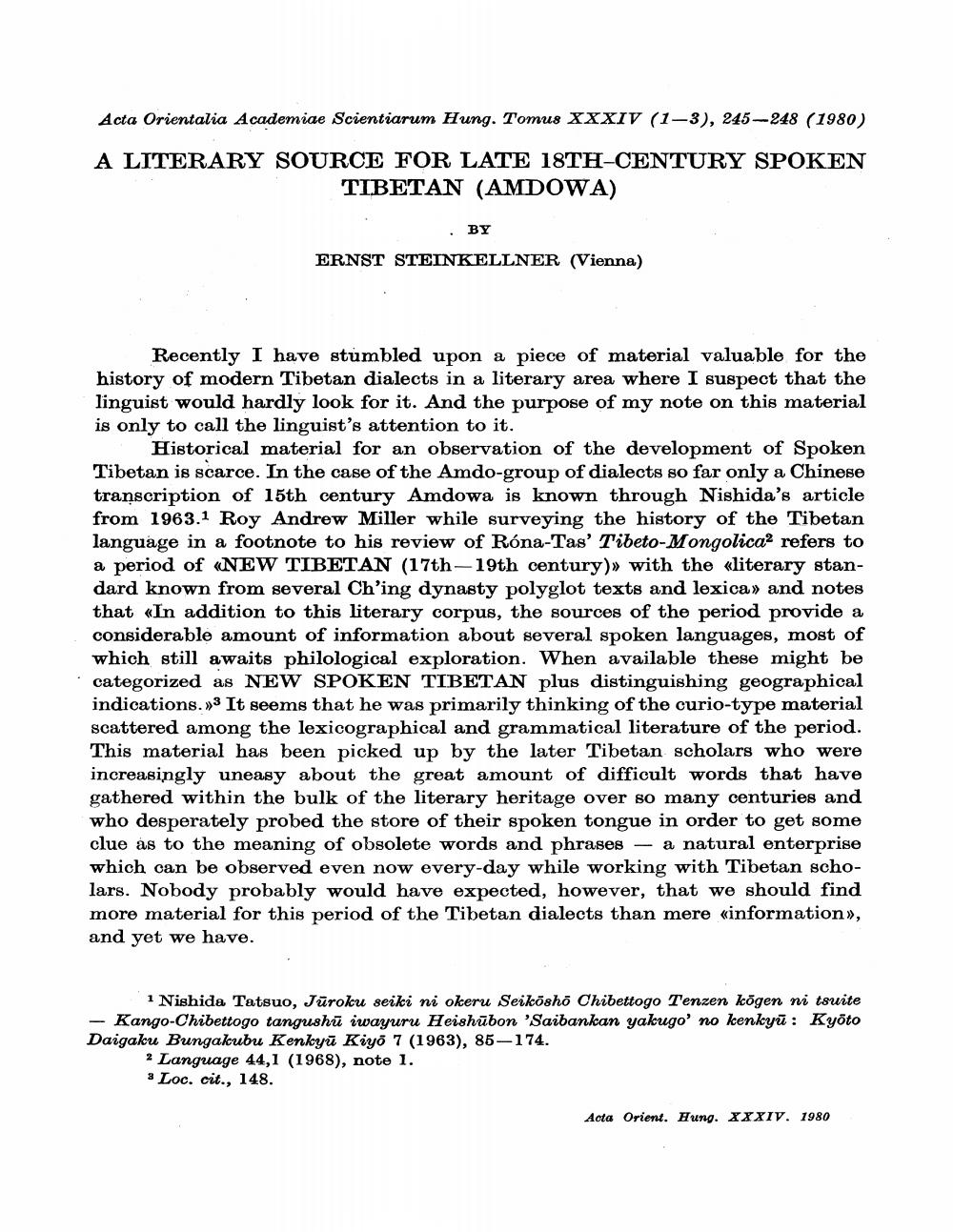Book Title: Literary Source For Late 18th Century Spoken Tibetan Author(s): Ernst Steinkellner Publisher: Ernst Steinkellner View full book textPage 1
________________ Acta Orientalia Academiae Scientiarum Hung. Tomus XXXIV (1-3), 245-248 (1980) A LITERARY SOURCE FOR LATE 18TH-CENTURY SPOKEN TIBETAN (AMDOWA) .BY ERNST STEINKELLNER (Vienna) Recently I have stumbled upon a piece of material valuable for the history of modern Tibetan dialects in a literary area where I suspect that the linguist would hardly look for it. And the purpose of my note on this material is only to call the linguist's attention to it. Historical material for an observation of the development of Spoken Tibetan is scarce. In the case of the Amdo-group of dialects so far only a Chinese transcription of 15th century Amdowa is known through Nishida's article from 1963.1 Roy Andrew Miller while surveying the history of the Tibetan language in a footnote to his review of Róna-Tas' Tibeto-Mongolica2 refers to a period of «NEW TIBETAN (17th-19th century)» with the «literary standard known from several Ch'ing dynasty polyglot texts and lexica» and notes that «In addition to this literary corpus, the sources of the period provide a considerable amount of information about several spoken languages, most of which still awaits philological exploration. When available these might be categorized as NEW SPOKEN TIBETAN plus distinguishing geographical indications. It seems that he was primarily thinking of the curio-type material scattered among the lexicographical and grammatical literature of the period. This material has been picked up by the later Tibetan scholars who were increasingly uneasy about the great amount of difficult words that have gathered within the bulk of the literary heritage over so many centuries and who desperately probed the store of their spoken tongue in order to get some clue as to the meaning of obsolete words and phrases – a natural enterprise which can be observed even now every day while working with Tibetan scholars. Nobody probably would have expected, however, that we should find more material for this period of the Tibetan dialects than mere «information», and yet we have. 1 Nishida Tatsuo, Jüroku seiki ni okeru Seikosho Chibettogo Tenzen kögen ni tsuite - Kango-Chibettogo tangushū iwayuru Heishūbon 'Saibankan yakugo' no kenkyū : Kyoto Daigaku Bungakubu Kenkyū Kiyo 7 (1963), 85-174. 2 Language 44,1 (1968), note 1. 3 Loc. cit., 148. Acta Orient. Hung. XXXIV. 1980Page Navigation
1 2 3 4 5
